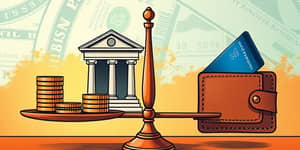
Managing multiple debts can feel overwhelming, with various due dates, interest rates, and statements vying for your attention. By choosing the right strategy, you can regain control of your finances, reduce stress, and work toward freedom from debt.
In this article, you’ll discover how a personal loan can help you simplify payments, potentially save money on interest, and build a clearer path toward financial stability.
Debt consolidation combines multiple outstanding balances—such as credit cards, medical bills, and personal loans—into a single new loan with one monthly payment. This approach aims to replace scattered due dates and varying rates with a unified repayment plan.
When executed properly, consolidation can transform a complex web of obligations into a straightforward schedule, making it easier to track progress and remain motivated.
Among the various consolidation options, an unsecured personal loan stands out for its simplicity and accessibility. Unlike home equity loans or lines of credit, a personal loan requires no collateral and typically comes with a predictable payoff timeline.
Key advantages include:
Following a clear process ensures you get the most out of consolidation without unexpected costs. Take each step methodically to assess your current situation and choose the best loan.
Understanding current market data can highlight potential savings and risks. As of 2025, average credit card APRs hover between 20% and 30%, while personal loan APRs for well-qualified borrowers typically range from 8% to 15%.
Consider a borrower with $14,000 in credit card debt at 24% APR. By consolidating $8,000 of that balance into a personal loan at 12% APR over five years, monthly payments drop, and total interest paid can shrink by thousands of dollars.
Every financial decision comes with trade-offs. Below is a breakdown of key benefits and potential drawbacks to help you decide if consolidation aligns with your goals.
Before committing to a personal loan, evaluate all costs and requirements carefully. Origination fees, balance transfer charges, and annual fees can eat into potential savings.
Discipline is key: paying off credit cards does not close them automatically. Without a plan to curb new spending, you risk replacing one debt cycle with another.
Debt consolidation via a personal loan works best for borrowers who:
- Maintain a solid credit score and stable income.
- Are committed to strict spending discipline and planning post-consolidation.
- Seek one streamlined monthly payment and clearer financial tracking.
If your credit profile is weak or you anticipate needing flexible access to funds, explore alternatives such as balance transfer cards or debt management plans.
Ready to take control? Follow these expert-recommended steps to ensure a successful consolidation journey.
By taking these measures, you can unlock the benefits of consolidation—reducing stress, saving money, and laying a foundation for long-term financial health.
Debt consolidation with a personal loan isn’t a magic bullet, but for disciplined individuals it offers a clear, manageable path out of debt. With thorough planning, informed lender selection, and responsible money habits, you’ll move closer to the security and peace of mind you deserve.
References













